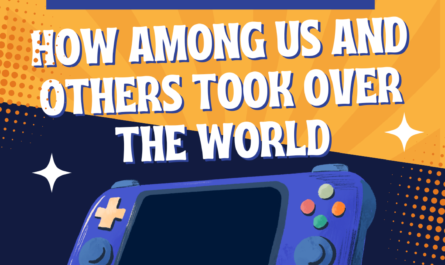Introduction: The Resurrection of 8-Bit Glory
From $200 NES cartridges to million-dollar arcade cabinet auctions, retro gaming isn’t just surviving—it’s thriving harder than a Konami code power-up. But why are we obsessing over 40-year-old pixels when modern games look like playable movies? This retro gaming comeback is more than just nostalgia; it’s a massive digital revival that’s impacting players, developers, and the entire gaming industry.
This joystick-journey reveals:
-
How retro gaming became a $20 billion industry.
-
The dark side of game preservation (and why Nintendo keeps suing everyone).
-
Why young gamers who never owned a Super Nintendo are buying CRT TVs.
-
Which forgotten classics are secretly printing money.

10. The Speedrunning Effect: How Glitches Became Gold
The Trend:
Speedrunning has become a key player in the retro gaming comeback. Players breaking old games (and getting famous for it) is now a staple on platforms like Twitch. Super Mario 64 speedruns now outsell modern indie games on streaming services.
Most Bizarre Record:
A GoldenEye 007 player memorized every guard’s patrol route—now consulting for the James Bond franchise. This shows just how much retro games have impacted modern culture.
9. The “Sell Your Kidney” Retro Market
Most Valuable Games:
-
Super Mario Bros. (Wata 9.8) – $2M (the same price as a NYC apartment).
-
Stadium Events – $500K (rarer than unicorn blood).
The Scam Alert:
Grading companies have been accused of artificially inflating prices. A Sonic 2 prototype “found” in a landfill turned out to be fake, showing the darker side of the retro gaming market.
8. The Emulator Wars: Legal vs. Illegal
The Battle:
While Nintendo has made efforts to shut down emulator sites, Sony has embraced the nostalgia trend by releasing official PS1 emulators, creating a controversial legal landscape around retro games.
Hypocrisy Exposed:
Despite Nintendo‘s anti-ROM stance, the company continues to sell old ROMs, leaving some gamers frustrated with the retro gaming comeback.
7. Modern Games That Pretend to Be Retro
Biggest Fakers:
Games like Shovel Knight (looks NES but is impossible on NES hardware) and Celeste (SNES-style but far more difficult) show how modern developers use nostalgia without the frustrating game mechanics of the past.
Why It Works:
These games hit the sweet spot—offering retro vibes without the frustration of outdated mechanics. They tap into the retro gaming trend while introducing fresh, modern elements.
6. The Arcade Bar Boom: Alcohol + Quarter Munchers
Most Successful Chains:
-
Barcade (NYC) – Generates $5M/year from millennials playing TMNT.
-
Ground Kontrol (Portland) – Serves $20 cocktails next to Pac-Man machines.
The Irony:
People are now spending more on drinks than their parents did on arcade games, but these bars have been a huge part of the retro gaming comeback.
5. The “Lost Game” Hunters
Most Wanted:
-
Bio Force Ape (unreleased NES game) – Only one known cartridge exists.
-
Sonic Crackers (Sega Genesis prototype) – Dumped online in 2020.
Biggest Find:
A Mega Man sequel was found in a Texas flea market and sold for $75K. This proves that retro games are big business, even in their rarest forms.
4. The YouTube Nostalgia Machine
Top Channels:
-
AVGN – Raging at old games for over 20 years.
-
Summoning Salt – Documenting speedrun history.
The Algorithm Twist:
YouTube’s algorithm seems to favor retro content, keeping the retro gaming comeback alive on its platform more than modern gaming content.
3. The “They Don’t Make ‘Em Like This” Factor
Modern Gaming Problems:
Microtransactions, 200GB updates, and always-online DRM have become standard in modern games.
Retro Advantages:
-
Plug and play.
-
No loot boxes.
-
Actually own your games.
The simplicity of retro games has become one of the primary reasons for their resurgence.
2. The Switch Effect: Nintendo Printing Money
Best-Selling Re-Releases:
-
Super Mario 3D All-Stars – 9M copies sold despite being “lazy ports.”
-
Nintendo Switch Online NES/SNES – 50M+ subscribers.
The Dirty Secret:
Nintendo could release more classic titles, but instead, they drip-feed them for profit, fueling the retro gaming market even further.
1. The Future: Will Retro Gaming Die Again?
The Threats:
-
Failing cartridges (batteries dying, discs rotting).
-
Generation gap – Will Gen Alpha care about Donkey Kong?
The Hope:
-
FPGA clones (Analogue consoles).
-
Modders keeping old hardware alive.
Final Boss Question: Are You Part of the Problem?
Do you own a retro console you never play? Have you paid $100 for a game you once emulated as a kid? Will you still care in 10 years? Let’s discuss in the comments below.
if you liked reading this article also checkout: Internet Memes History
also checkout: Click Here



